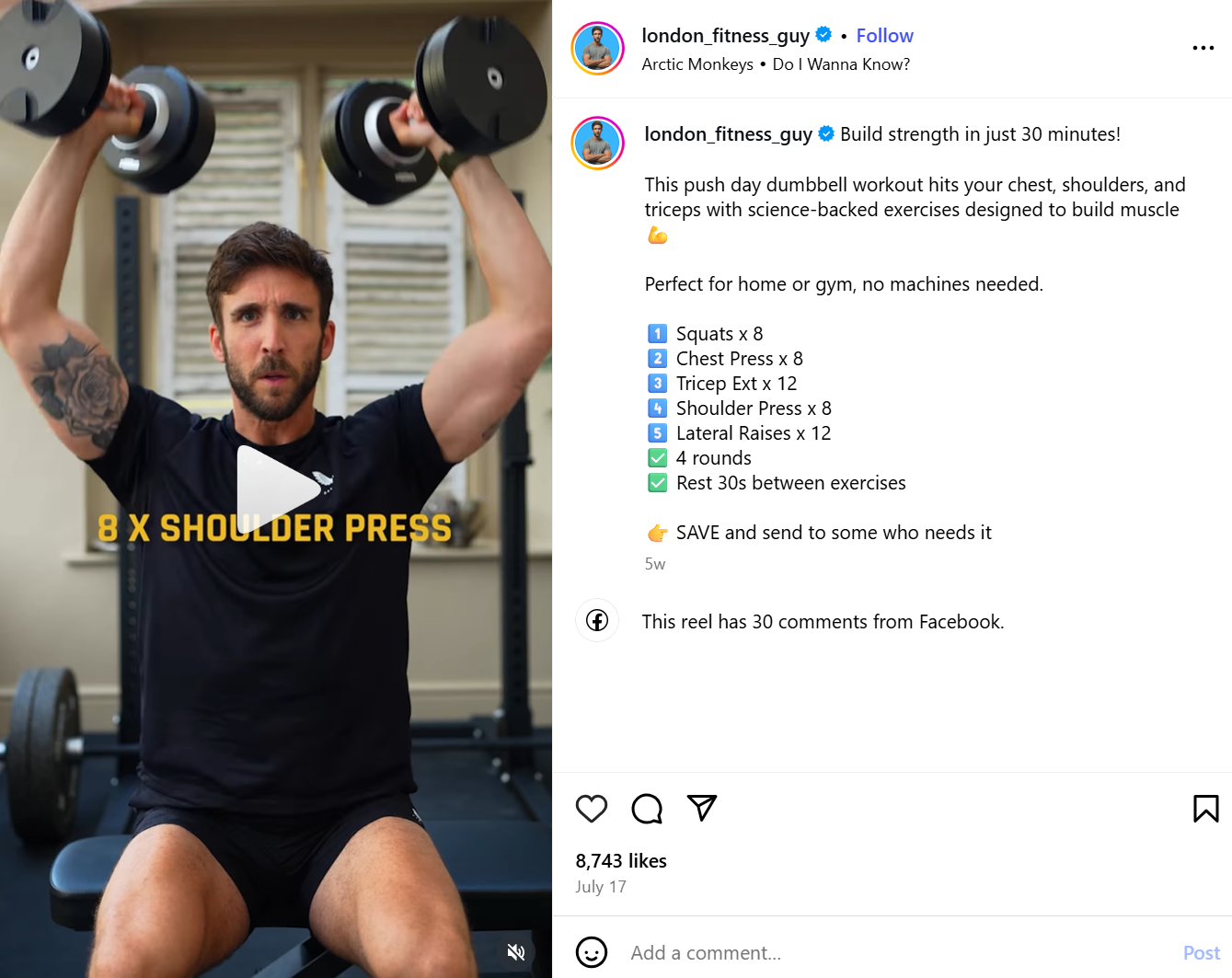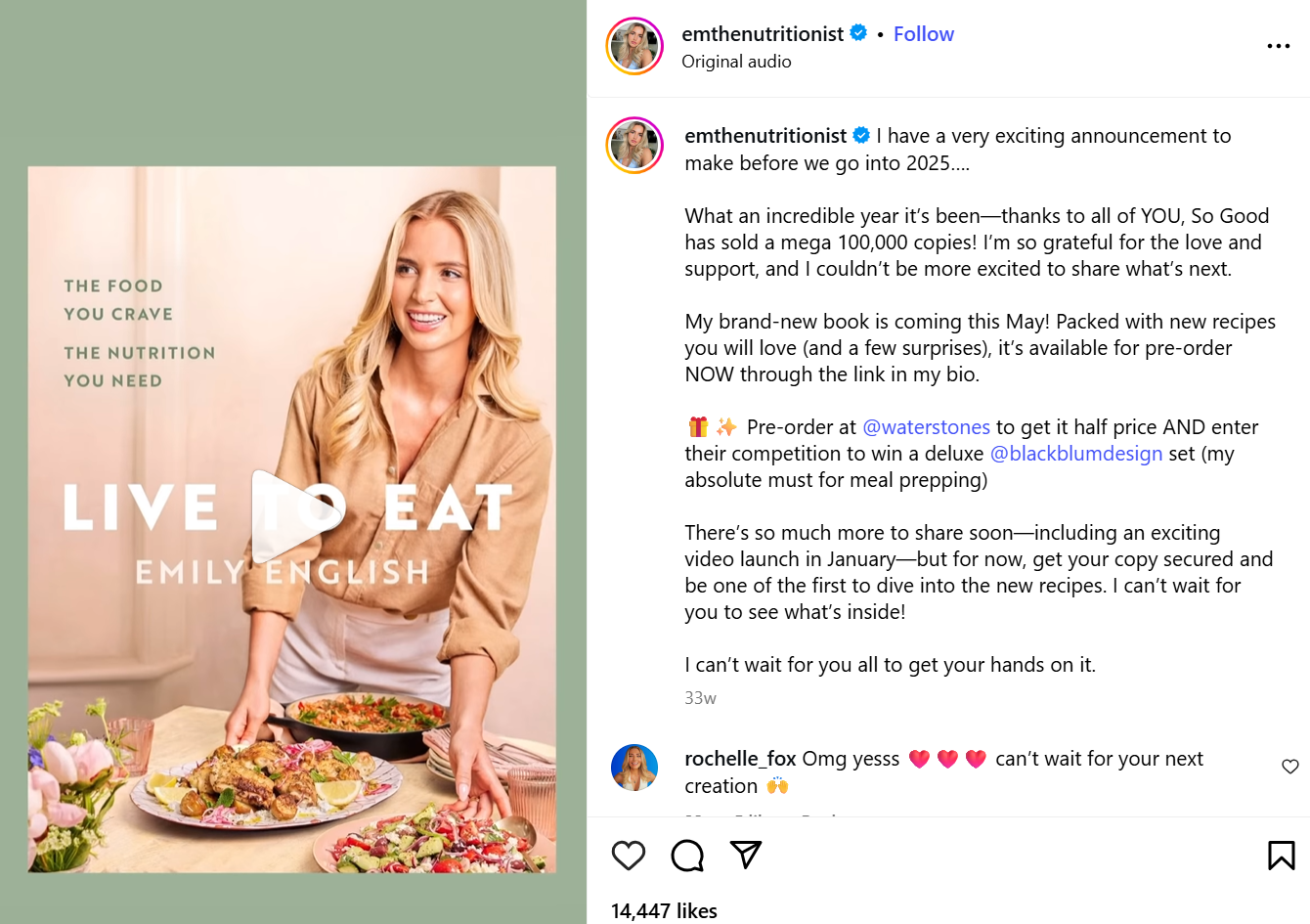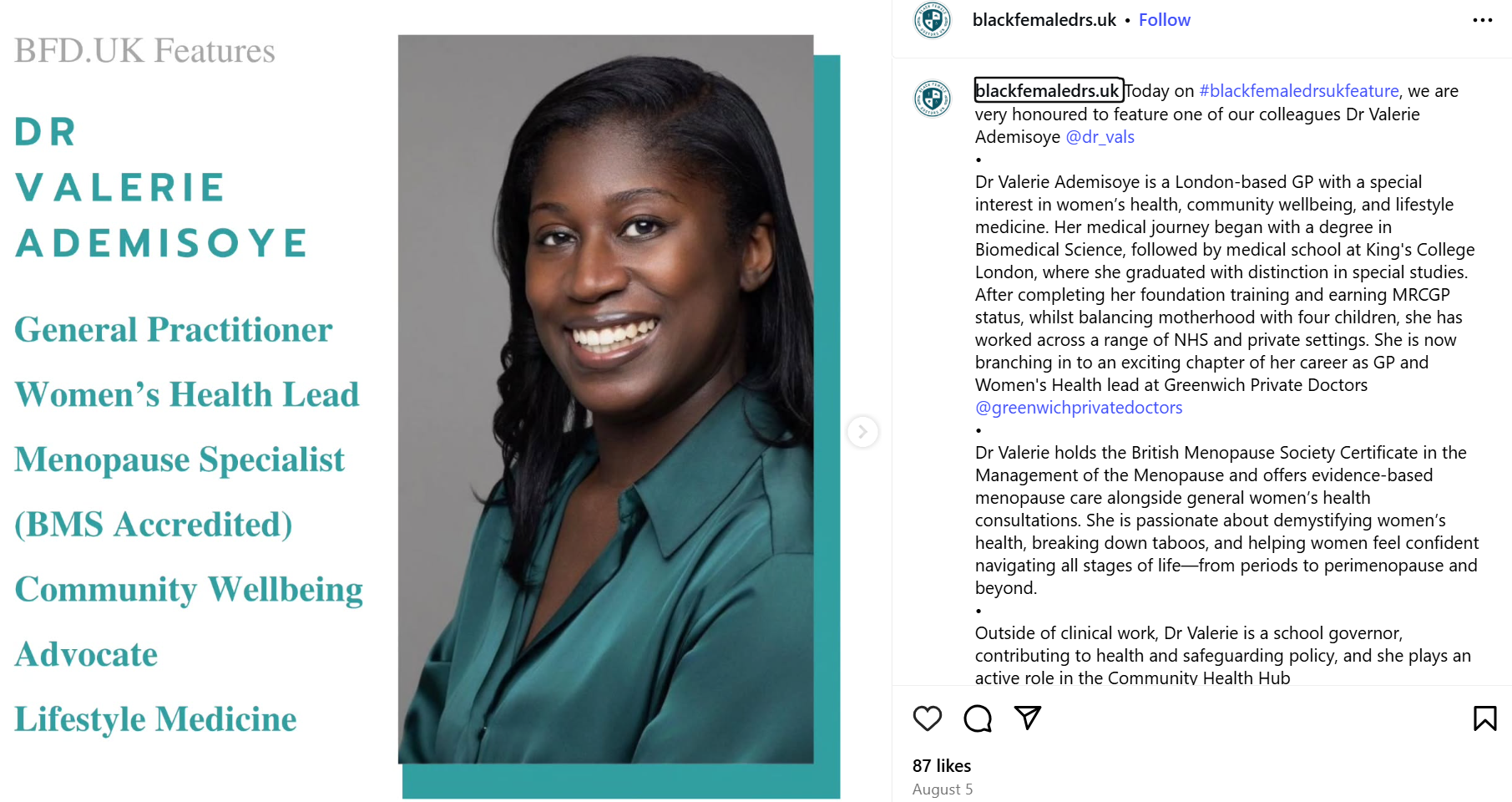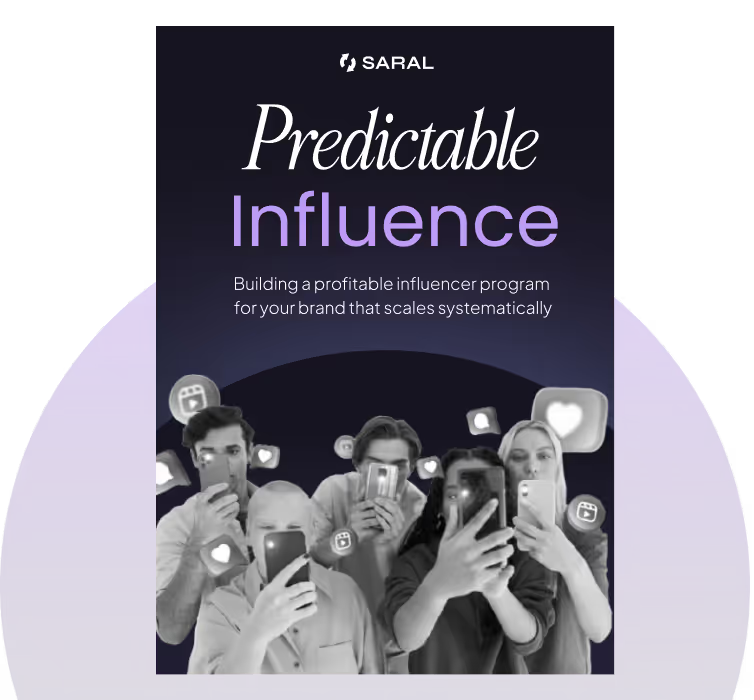Ready to drive incremental growth with influencers?
If ditching the randomness of influencer campaigns and building a predictable, ROI-first influencer program sounds like a plan. Consider talking to our team!

Influencer Marketing
A guide to wellness influencer marketing covering influencer selection, outreach, content creation helping brands drive engagement in the health and wellness industry.
Contents
The health and wellness industry is on track to reach $1 trillion by 2026 and a growing share of that spending is being shaped by health and wellness influencers. These creators aren’t just posting smoothie recipes or gym selfies anymore; they’re shaping buying habits, setting wellness trends, and building communities that brands can tap into for real impact.
Over the last few years, health and wellness influencer marketing has shifted from one-off product shoutouts to long-term, authentic partnerships that feel more like genuine endorsements than paid ads. When done right, these collaborations can build brand credibility, generate high-intent leads, and drive measurable ROI—whether you’re selling supplements, fitness equipment, meditation apps, or B2B wellness solutions.
In this guide, you’ll learn how to work with wellness influencers strategically from identifying the right partners to structuring campaigns that deliver results. You’ll get a step-by-step framework to help your brand stand out, win trust, and achieve sustainable growth in one of the fastest-evolving markets today.
When it comes to health and wellness, buyers aren’t just looking for a product they’re looking for proof it works, reassurance it’s safe, and a sense of belonging to a lifestyle they aspire to. That’s where health and wellness influencers excel.
In wellness, trust is the currency. Consumers are often making personal decisions about their bodies, diets, and mental health that carry more weight than an impulse buy. This means they rely heavily on trusted voices.
Key takeaway: In wellness marketing, authenticity isn’t a buzzword it’s the foundation of conversion.
Wellness is inherently visual. Whether it’s the glow of post-yoga energy, the transformation from a new fitness regimen, or the artistry of a nutrient-packed bowl, these stories need to be seen to be believed.
Key takeaway: Influencers excel at creating content that taps into how people actually research, visualize, and commit to a wellness purchase.
Unlike many verticals, wellness isn’t a one-and-done purchase it’s a lifestyle shift. Successful health and wellness influencers don’t just sell products; they build communities where like-minded individuals share progress, challenges, and wins.
Key takeaway: The most valuable ROI in wellness influencer marketing comes not just from conversions, but from the loyal, vocal communities that grow around your brand.
Choosing the right health and wellness influencers can make or break your campaign. Each niche offers unique benefits, audiences, and strategic considerations. Here’s how to evaluate them.

These influencers range from personal trainers to yoga instructors and everyday athletes documenting their progress.
Pro tip: Partner with influencers whose fitness philosophy aligns with your brand audiences notice mismatches quickly.

From plant-based recipe developers to functional food reviewers, these influencers drive visual, shareable content that can spark cravings and curiosity.
Pro tip: Send products in time for influencers to incorporate them into trending seasonal content.

This category requires sensitivity and a brand safety-first approach. These influencers focus on meditation, stress reduction, therapy, and emotional well-being.
Pro tip: Consider collaborations that offer value, like free meditation guides or mental health resources, rather than direct sales pushes.

Doctors, nutritionists, physiotherapists, and other credentialed professionals bring unmatched credibility and authority.
Pro tip: Use these influencers for high-stakes campaigns where evidence-based trust is critical such as launching a medical-grade wellness product.
Finding the right partner in health and wellness influencer marketing isn’t about chasing the biggest name it’s about aligning with influencers who can truly move the needle for your brand.
Follower count is a vanity metric if the audience isn’t engaged or relevant. Focus on:
Key takeaway: A smaller, engaged, relevant audience beats a large, disengaged one every time.
The wellness industry’s popularity has also attracted influencers with inflated metrics. Protect your investment by:
Key takeaway: Authenticity safeguards both campaign ROI and brand credibility.
Working with health and wellness influencers isn’t just about sending free products and hoping for the best it’s about building intentional partnerships that deliver measurable results. Here’s how to do it right.
Cold, generic outreach rarely works in wellness marketing. These influencers often have deeply invested communities, and they’re selective about who they endorse.
Pro tip: Keep your outreach email concise but personal. You’re starting a conversation, not sending a legal document.
Your brief should guide without handcuffing creativity. Wellness audiences can spot overly scripted posts instantly.
Pro tip: Include examples of past high-performing content to inspire tone and style, but don’t demand imitation.
Think of your influencer partner as a creative collaborator, not a hired spokesperson.
Pro tip: Track performance across every platform where the content lives—not just the influencer’s original post to get a true ROI picture.
In health and wellness influencer marketing, the way content is delivered can be just as important as the message itself. Different formats engage audiences differently, so choosing the right mix is critical for ROI.
Instagram remains a core platform for wellness content, but each format has unique strengths.
Pro tip: Combine formats for layered storytelling use a Reel for reach, a Story for urgency, and a Feed post for depth.
Not all wellness marketing happens in 15 seconds sometimes, audiences need more context to make informed decisions.
Pro tip: Use long-form to build credibility and trust especially for higher-consideration purchases like wellness programs or medical-grade products.
Live formats tap into urgency, exclusivity, and direct interaction.
Pro tip: Always promote live sessions in advance and have a moderator on hand to manage comments and keep the conversation on track.
If you’re only tracking likes and follower growth, you’re missing the bigger picture. In health and wellness influencer marketing, success means tying activity directly to business outcomes.
Your measurement focus should evolve depending on where the campaign sits in the funnel.
Key takeaway: Match your KPIs to the campaign’s purpose measuring the wrong thing can make a winning campaign look like a failure.
The wellness space operates under stricter scrutiny than many other influencer niches. Health and wellness influencer marketing must not only resonate with audiences it must also pass legal muster.
The Federal Trade Commission (FTC) makes it clear: transparency is non-negotiable.
Pro tip: Provide influencers with an easy-to-follow disclosure guide to protect both your brand and theirs.
In addition to FTC rules, many wellness products fall under Food and Drug Administration (FDA) oversight.
Pro tip: When in doubt, have all claims reviewed by a regulatory compliance expert before launching the campaign.
Even well-funded health and wellness influencer marketing campaigns can flop if strategy and execution aren’t airtight. Here’s what to watch for and how to sidestep the traps.
How to avoid it: Vet audience alignment early, share brand guidelines but leave room for personal storytelling, and set up robust tracking before launch.
Wellness brands operate under extra scrutiny missing a single disclosure or making an unverified claim can lead to fines or reputational damage.
Key takeaway: A proactive compliance approach protects your brand, your influencers, and your customers.
The wellness influencer landscape is evolving quickly. Staying ahead of the curve means adapting your strategy before everyone else catches up.
Artificial intelligence is taking the guesswork out of influencer marketing, making campaigns more precise and efficient.
Pro tip: Use AI as an enhancement, not a replacement for human judgment which is crucial for brand voice and values alignment.
While Instagram and YouTube remain strong, new platforms are creating fresh opportunities for health and wellness influencer marketing.
Key takeaway: Don’t spread yourself too thin test new platforms strategically while continuing to optimize for proven channels.
You now have the framework to navigate health and wellness influencer marketing with confidence from identifying the right partners to tracking measurable ROI. The next step is execution. Here’s how to turn insight into action.
Pro tip: Don’t wait until the campaign ends to optimize—real-time tweaks can significantly improve ROI.
1. What defines effective health & wellness influencer marketing?
Effective health & wellness influencer marketing combines authenticity, trust, and expertise. Influencers with genuine credibility in fitness, nutrition, or holistic living help brands connect with health-conscious audiences. Campaigns succeed when influencers provide educational content, personal stories, and product integrations that inspire healthier lifestyles, creating long-term engagement and driving both awareness and conversions.
2. How do I choose the right health or wellness influencers for my brand?
Choosing the right health influencer starts with aligning audience demographics and values. Brands should analyze engagement quality, follower authenticity, niche expertise, and content style. Collaborating with certified professionals like dietitians, fitness trainers, or wellness coaches ensures credibility. Selecting influencers who genuinely use or believe in your product builds stronger brand trust.
3. What metrics and credentials matter when vetting wellness influencers?
When vetting wellness influencers, look beyond follower count. Key metrics include engagement rate, audience demographics, content consistency, and authenticity. Professional credentials such as certifications in nutrition, fitness, or wellness enhance trust. Past brand collaborations, content quality, and follower sentiment also indicate reliability, helping ensure partnerships drive measurable brand impact.
4. How can brands ensure compliance and transparency in wellness influencer collaborations.
Compliance in wellness influencer campaigns requires clear disclosure of sponsored posts, transparent health claims, and adherence to FTC guidelines. Brands should avoid misleading medical claims and ensure influencers use approved terminology. Collaborating with influencers who prioritize ethical promotion fosters credibility, protects audiences, and minimizes legal or reputational risks long-term.
5. What are the best strategies to measure ROI and performance in health & wellness influencer campaigns?
To measure ROI, track reach, impressions, engagement, conversions, and customer acquisition costs. Combine quantitative data with qualitative signals like community feedback and user-generated content. Monitor long-term brand lift and retention, not just one-off sales. Using unique discount codes, affiliate links, and analytics tools ensures accurate campaign performance attribution.

Sign up for a 7-day email course on the unique "Predictable Influence" strategy used by top brands like Grüns, Obvi, Tabs Chocolate.

If ditching the randomness of influencer campaigns and building a predictable, ROI-first influencer program sounds like a plan. Consider talking to our team!